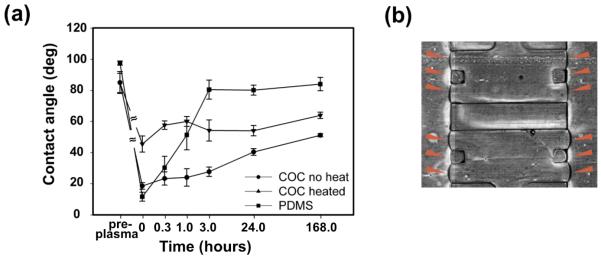Fig. 4.
Oxygen plasma treatment of COC created controlled, stable hydrophilicity compared to PDMS to enable collagen gel control in the devices. (a) Contact angles prior to 30 seconds at 100W intensity plasma treatment (pre-plasma), after the plasma treatment (0.0 hours), and over time following the plasma treatment (remaining time points) indicated the long-term stability of COC surface energy compared to PDMS. Thermal treatment of COC (heated) altered hydrophilicity as compared to COC not thermally treated (no heat). Thermal treatment consisted of 30 minutes at 77°C and 2 minutes at 120°C after the plasma treatment. (b) Controlling hydrophilicity of the COC device enabled gel containment to the appropriate areas within the square posts. The triangle markers in the channels point to the gel/channel interface. The collagen gel mimics extracellular environment in this COC microfluidic device

